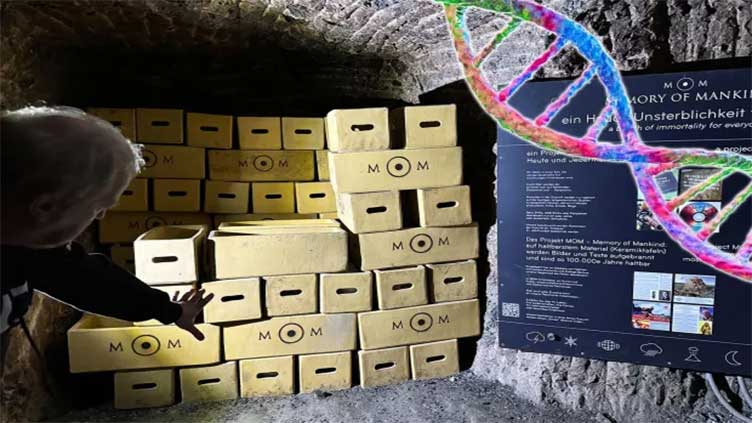How human DNA stored in cave could bring humanity back from extinction

Technology
DNA on memory crystals could eventually be used to revive society after an extinction event
(Web Desk) - Scientists have a new plan B for humanity, should life as we know it heads towards extinction.
Hidden in a salt cave in Austria, scientists have stored human DNA on memory crystals which could eventually be used to revive society after an extinction event.
A memory crystal is essentially a sophisticated 5D memory card made of a material equivalent to fused quartz - one of the most durable materials on Earth.
Unlike other data storage formats, these don't degrade over time.
So-called "eternity crystals", developed by scientists from the University of Southampton, are practically indestructible and can survive for billions of years without data loss.
They can withstand freezing, fire and temperatures of up to 1000 °C, as well as cosmic radiation and heavy impacts.
The crystals can store up to 360 terabytes of data, enough room for the human genome which contains roughly three billion letters.
The idea is that the human genome inscribed onto the crystal will be able to survive war, natural disasters, or a cataclysmic asteroid strike.
While today's science is not advanced enough to create humans synthetically, the team noted that recent strides in the sector could allow for it in the future.
The team also theorises that beings, of either organic life or machines, may be able to revive humans if the science allows in the far distant future.
“We know from the work of others that genetic material of simple organisms can be synthesised and used in an existing cell to create a viable living specimen in a lab,” says Professor Peter Kazansky, who led the team at Southampton.
“The 5D memory crystal opens up possibilities for other researchers to build an everlasting repository of genomic information from which complex organisms like plants and animals might be restored should science in the future allow.
Scientists used ultra-fast lasers to inscribe the DNA data into the crystal on a nano-level, with the help of Helixwork Technologies.
The unique method uses two optical dimensions and three spatial co-ordinates to inscribe the material, which is why '5D' is in the name.
What you see inscribed on the crystal disc is not all the information stored inside the crystal structure - that is only a "visual key", according to Kazansky.
“The visual key inscribed on the crystal gives the finder knowledge of what data is stored inside and how it could be used,” he said.
The crystals are now being stored in the Memory of Mankind archive – a time capsule located inside a salt cave in the mountainous town of Hallstatt, Austria.
Kazansky added: “We don’t know if memory crystal technology will ever follow these plaques in distance travelled but each disc can be expected with a high degree of confidence to exceed their
The team believes this storage method could also be used to store the genomes of endangered plant and animal species.



